An Example of Associational Form: A Movie
excerpt from Film Art: An Introduction, 9th edition, McGraw-Hill (2010): 376-381
Bruce Conner’s film A Movie illustrates how associational form can confront us with evocative and mysterious juxtapositions, yet can at the same time create a coherent film that has an intense impact on the viewer.
Conner made A Movie, his first film, in 1958. Like Léger, he worked in the visual and plastic arts and was noted for his assemblage pieces—collages built up of miscellaneous found objects. Conner took a comparable approach to filmmaking. He typically used footage from old newsreels, Hollywood movies, soft-core pornography, and the like. By working in the found-footage genre, Conner juxtaposed two shots from widely different sources. When we see the two shots together, we strive to find some connection between them. From a series of juxtapositions, our activity can create an overall emotion or concept.
A Movie uses a musical accompaniment that helps establish these emotions and ideas. As with the images, Conner chose music that already existed: three portions of Respighi’s well-known tone poem The Pines of Rome. The music is important to the film’s form, since it has distinct sections. Moreover, the atmosphere of each segment is different, corresponding to the music. The beginning of what we’ll identify as segment 3, showing women carrying totems, the crash of the Hindenburg dirigible, and some daring acrobats, gains its ominous effect largely from the eerie core. Likewise, the driving music accompanying segment 4 sweeps a string of horrendous disasters into one plunging apocalyptic rush. Conner’s use of The Pines of Rome shows vividly how associational form can create both general ideas and strong emotional effects.
We can break A Movie into four large-scale segments. Each segment consists of related images, marked off from other segments by a shared expressive idea and by a distinct musical accompaniment.
- An introductory portion with the film’s title and director’s name and projectionists’ markings;
- Quick, dynamic music with images of moving animals and vehicles on land;
- A more mysterious, tense section stressing precariously balanced objects in air and water; and
- Frightening images of disaster and war interspersed with more lyrical, mysterious scenes.
“Part of the creation of the sequence you’re thinking about happened during the process of collecting film. I snip out small parts of films and collect them on a larger reel. Sometimes when I tail-end one bit of the film onto another, I’ll find a relationship that I would have never thought about consciously—because it doesn’t create a logical continuity, or it doesn’t fit my concept of how to edit a film.”
—Bruce Conner, experimental filmmaker
In only 12 minutes, A Movie leads us through a range of emotionally charged ideas and qualities. It also creates a distinct developmental thread. In segments 2 to 4, many shots emphasize accidents or aggressive actions, and while some of these seem funny or trivial at first, they gradually accumulate and become more serious. By segment 4, a series of war scenes and natural disasters presents practically an apocalyptic vision. A Movie’s tone finally eases in its closing underwater scenes.
Segment 1
This segment does far more than give us the title and the filmmaker’s name, and for that reason, we have numbered it as the first segment rather than separating it off as a credits sequence. At first, we see blank black leader, over which the brisk opening of The Pines of Rome begins. This stresses the importance of the music in the film, since we hear it before seeing any images. Then the words “Bruce Conner” appear, remaining on the screen for many seconds. Because we do not need that much time to read the name, we may begin to sense that the film will playfully thwart our expectations.
After the name, we see more black leader, then white leader, then a quick flicker effect rapidly alternating two frames of the word “A” with a blank white leader, and finally the word “Movie.” The word “By” appears, with more white frames, then “Bruce Conner,” as before. Now a black leader appears, with markings that usually appear on the first portion of the film strip but that are seldom projected on the screen for the audience to see: splice cues, dots, and other signs. Then, suddenly, “End of Part Four” flashes on the screen.
We might think that Conner is simply playing with the graphic qualities of titles and leader marks, as Leger and Murphy did in segment 5 of Ballet mécanique with its dance of intertitles and zeros. But here Conner uses graphics with conventional meanings: leaders and credits usually signal the beginning, while “End of Part Four” implies we have already seen a considerable part of the film. Once again A Movie signals us that it will not be an ordinary film—not one in which the parts follow in logical order. We must expect odd juxtapositions. Moreover, the flicker and leader markings stress the physical qualities of the film medium itself. The title A Movie reinforces this reference to the medium, cueing us to watch this assemblage of shots as bits of film.
The opening continues with a countdown leader, beginning with “12” and flashing other numbers at one-second intervals—again, more signals to the projectionist, but seldom seen by the audience. Is this the beginning, then? But after “4,” we are startled to see the film’s first moving image: a “nudie” shot of a woman taking off her stockings. The shot is very worn, with lines and scratches, and we surmise that Conner scavenged it from an old stag film. Here A Movie helps us to focus our expectations by suggesting that it will involve more found footage of this type. After the nude shot, the countdown leader continues to “1,” then the words “The End” appear. Another joke: this is the end of the leader, not of the film. Yet even this is untrue, since more leader appears, with “Movie” backward, more projectionists’ signals, and a repeating number “1” that flickers in time to the music’s quick tempo, then goes to black.
Segment 2
Although the music runs continuously over the transition, in segment 2 we begin to see a very different kind of image. A series of 12 shots shows us mounted Indians sitting on a hill, then chasing a fleeing wagon train, with Hopalong Cassidy recognizable as one of the cowboys. More old film footage follows, this time a clip suggesting a story situation that will continue from shot to shot: a fight between Indians and settlers. But Conner shows us this scene only to refer briefly to the conventional kind of movie he is not making (10.76, 10.77). The association here seems clear enough; we move from horses to more horses, all in rapid motion. The next change, moving toward imagery of cavalry, confirms this association among horse-drawn vehicles.
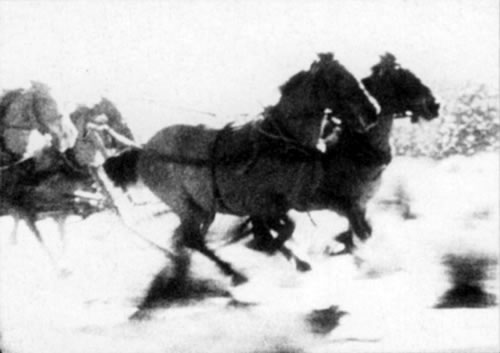
Figure 10.76: In A Movie, from a shot of galloping horses pulling a wagon, Connor cuts to…
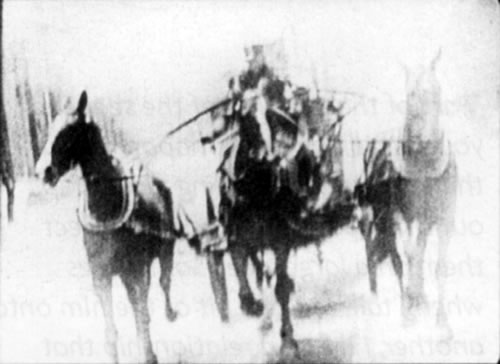
Figure 10.76: …similar horses, but now pulling a fire engine on a city street.
There follows a shaky shot of a charging elephant. Now we must stretch our associations to account for this: maybe the link is through a series of rapidly moving animals? This seems safe enough to assume, as we see two more shots of horses’ running legs. But the next shot shows a speeding locomotive’s wheels. We must generalize the terms of the association still further—the rapid motion of animals and vehicles on land. (The “on land” idea may not seem important at this point, but it will become significant in contrast to the later segments, which often emphasize air and water.) The next series of shots, repeating these motifs and introducing a military tank, seems to confirm this overall idea of rushing movement.
Conner’s editing creates the effect of one rushing mass of activity by a simple convention: common screen direction. The animals and vehicles move from left to right, or come directly at the camera, creating shots that cut together in traditional continuity (10.76, 10.77). The effect is to suggest a colossal rush toward a single target. The impossibility of this juxtaposition is amusing, but it also suggests that humans, animals, and machines are caught up in an energetic planetary race—but toward what? The urgency of this sequence is heightened by graphic matches on objects hurtling out at the viewer (10.78, 10.79).
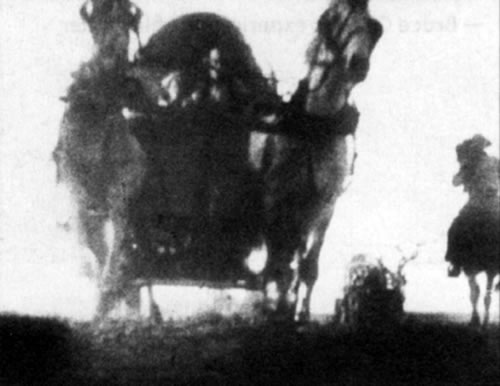
Figure 10.78: A graphic match in A Movie, links wagon…
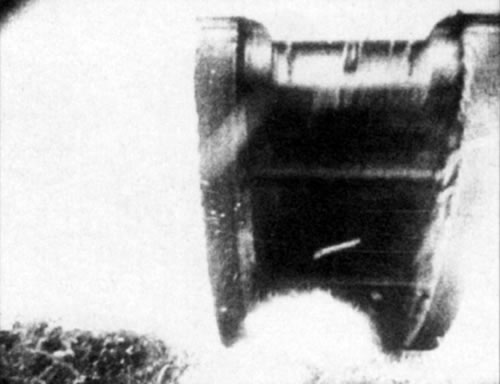
Figure 10.79: …and tank.
This sense of frantic activity continues into the later part of segment 2, which moves from the tank to a series of shots of race cars speeding around tracks. Since these shots initially confirm our expectations about moving animals and vehicles, they are less challenging to us—at first. Then one race car crashes, followed by two other similar crashes; and the segment ends with the long, spectacular fall of an old-fashioned car off a cliff. The sense of movement has become less funny an exhilarating, more uncontrolled and frightening. The tone of amusement has shifted toward one based on shock and horror in the face of so much devastation. Again, this effect is created by tight coordination of cutting, music, and movement in the frame. For instance, the frenzied buildup in the musical score accompanies the string a race car crashes. Blaring, dissonant phrases begin to punctuate the music at regular intervals, and Conner’s editing times each one to coincide with a car crash. The manic energy of the tumultuous race has turned reckless and self-destructive.
During the crashes, the music has built up to a frenzied climax, and it cuts off abruptly as a “The End” title flashes on the screen. This parody of the ending of a conventional film suggests that the crashes have resulted from all that rushing motion earlier in the segment. At this point, we might begin to sense that there has been an underlying tone of aggression and danger from the start: the attacking Indians, the cavalry, the charging elephant, the tank, and so on. This element will intensified in segments 3 and 4.
Segment 3
More black leader continues the transition set up by the “The End” title, and there is a pause before the music of segment 3 begins. (As at the film’s opening, it plays at first over the darkness.) But this time the music is slow, bleak, and slightly ominous. The “Movie” title and more black leader move us into a series of shots very different from those of segment 2. Two Polynesian women carry large, totemlike objects on their heads. Leader and a title interrupt once more, introducing a short series of shots of a large dirigible in flight (10.80) and of an acrobat couple performing on a small platform and tightrope high above a street (10.81). If the women and the dirigible are associated through balancing, the dirigible is linked to the acrobats not only by that but also by an emphasis on heights and danger. This portion of the segment ends with a shot of a small plane plunging downward through fleecy clouds, as if, having lost its balance, it is falling. Slow, sinister music has cued us how to react to these floating and falling objects; without the music, we might take them to be lyrical, but in context, they suggest a vague threat. This passage ends with more titles: ‘‘A,’’ “Movie,” “By,” and “Bruce Conner,” followed by black leader.
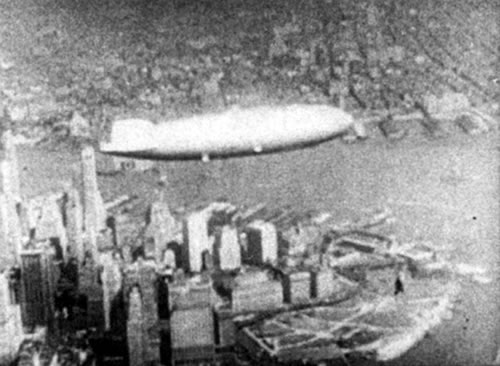
Figure 10.80: A Movie: image of heights…
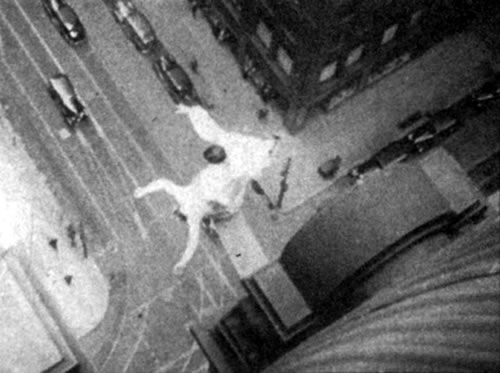
Figure 10.81: …and danger.
The next part of the segment begins with an apparent incongruity between music and image. A series of shots shows parts of a submarine, including an officer looking through a periscope (6.36). The next shot seems to suggest that he sees a bikini-clad woman (6.37). This shot picks up the stag film motif from segment 1 and points out the paradox of this juxtaposition. We know the shots of the officer and the woman come from different films—yet, at the same time, we cannot help but interpret the shots as showing him looking at her, and thus we find the moment comic. As earlier parts of the film reminded us of endless credit sequences, perhaps this makes fun of point-of-view editing and the Kuleshov effect.
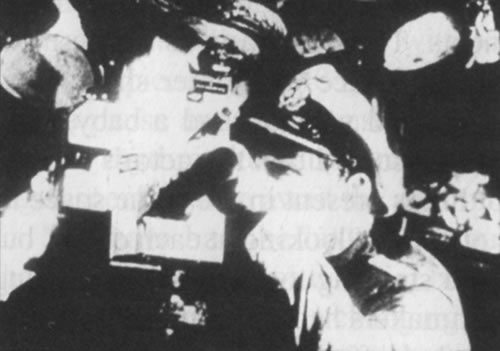
Figure 6.36: In A Movie, a shot from one film leads to…
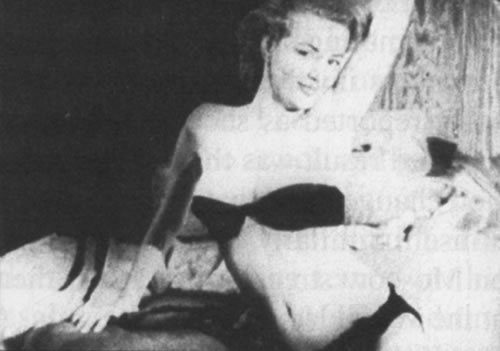
Figure 6.37: …a shot from another, creating a visual joke.
The same principle underlies the next shots, as the officer orders a torpedo fired, and we see it seeming to race toward the woman, creating a sexual pun. This, too, is funny, as is the atomic-bomb orgasm that seems to result. But, as in the first segment, there is an overtone of threat and aggression—now specifically sexual aggression—in these images. They move quickly from humor to disaster as additional mushroom cloud shots undercut the joke. Moreover, the music that plays through the submarine–woman series is slow, quiet, and ethereal—not appropriate to the erotic joke, but more suited to the images of the bomb blasts.
This music carries us into a series of shots of waves and wavelike movements that seem to result from the bomb: a ship engulfed by fog or smoke, surfers and rowing teams battered by heavy waves, water-skiers and motorboaters falling during stunts. During this, the music’s ethereal quality gives way to a slow melody with a dynamic tempo, played on low stringed instruments; this creates a more ominous tone. The first accidents seem trivial, as when water-skiers fall over. But gradually, things become more disturbing. A motorboat driver plows into a pile of debris and is hurled out.
Abruptly, people are seen riding odd bicycles (10.82). The move from the boat to the bikes takes us briefly away from the accident series to a string of shots showing people deliberately doing things that look grotesque. Additional shots show motorcyclists riding through mud and water, and a plane trying to land on a lake and flipping over.

Figure 10.82: An inexplicably grotesque image from A Movie.
The whole segment has developed steadily, introducing tension at the beginning and then juxtaposing the humorous (the submarine–woman scene) with the disastrous (the bomb) and trivial accidents with grotesque actions. The sequence ends in an odd way: black leader appears after the plane crash, with the music building up toward a climax. This is followed by a close view of Theodore Roosevelt speaking vigorously, seemingly angry, with bared teeth (10.83). Immediately, there follows a shot of a collapsing suspension bridge, with the music swelling up as the pieces fall (10.84) and then fading down. Although these shots are difficult to interpret, the association of human-caused disasters with one of America’s most belligerent presidents would seem to link even the toppling bridge to human, especially political, aggression.
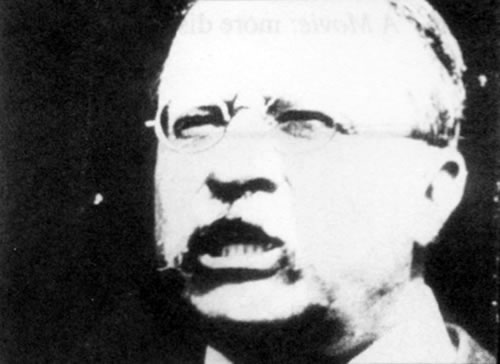
Figure 10.83: In this puzzling shot from A Movie, Roosevelt speak vigorously, seemingly angry, with bared teeth.
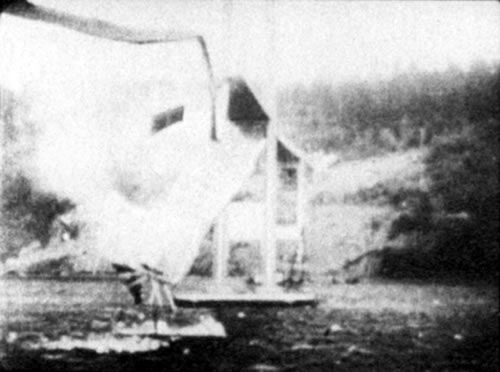
Figure 10.84: A collapsing bridge in A Movie.
Segment 4
Once more A Movie marks off its segments clearly, with black leader again accompanying the opening of the third portion of The Pines of Rome. An eerie gong and low, slow chords create a distinctly ominous mood. Segments 2 and 3 both built up toward accidents and disasters. Now segment 4 begins with a series of images of military planes being shot out of the sky and firing on the ground, followed by a series of explosions against a dark sky.
Yet the next passage juxtaposes shots of disasters with some shots that are inexplicable in this context. All the images of planes and explosions seem associated with war and disaster. Now we see two planes flying past an Egyptian pyramid (10.85). As with so many of the earlier juxtapositions, we must abruptly switch our assumptions about how these shots relate to one another, since now we see nonmilitary planes. But immediately, two shots of an erupting volcano appear. Clearly, the connection between them and the previous shot is mainly created by the pictorial similarity of mountains and pyramids. Are we back to disasters again? Seemingly not, for we next see an elaborate church ceremony, and all our expectations are thwarted. But the disaster motif returns as strongly as ever: the burning dirigible Hindenburg, tanks, more race car crashes, and tumbling bodies.
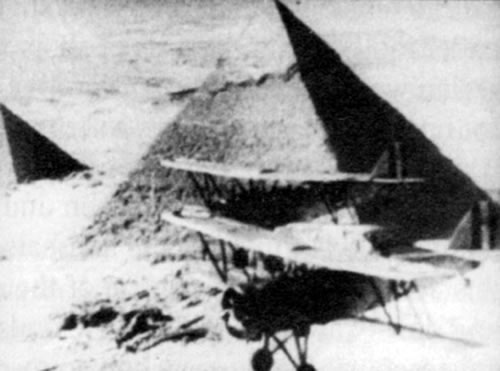
Figure 10.85: A Movie.
All these images create tension, but the next shots we see are of people parachuting from a plane. Interestingly, this action is not threatening, and the people here are not hurt. Yet in the context of the earlier accidents, and because of the ominous music, we have begun to expect some sort of disaster as the likeliest subject of each shot. Now even these innocent actions seem threatening and again may be seen as linked to military and political aggression.
The next series of shots is equally innocent in itself but takes on mysterious and ominous overtones as part of the overall segment. We see a burning balloon floating to earth, reminding us of the floating dirigible and Hindenburg footage. Shots of palm trees, cattle, and other images follow, suggesting some idyllic Middle Eastern or African setting (10.86). This brief respite, however, leads into one of the film’s eeriest and most striking moments: three shots of a suspension bridge writhing and buckling as if shaken by a giant hand (10.87). This is followed by the most intense disaster images in the whole film, including the burning Hindenburg: a sinking ship (10.88), a firing-squad execution, bodies hanging on a scaffold, dead soldiers, and a mushroom cloud. A shot of a dead elephant and hunters introduces a brief series of shots of suffering Africans. The music has built up during this, becoming steadily less ominous and more triumphant with fanfares of brass instruments.
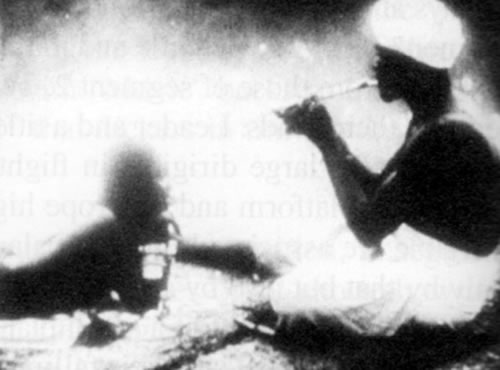
Figure 10.86: A brief moment of peace in A Movie.

Figure 10.87: A Movie: a frightening image of a buckling bridge.
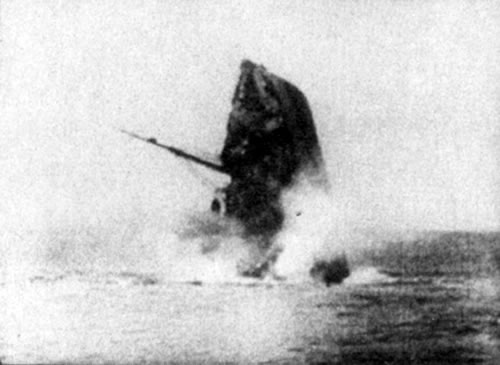
Figure 10.88: A Movie: more disasters as a ship sinks.
After the climactic series of disaster shots, the tone shifts one more time. A relatively lengthy series of underwater shots follows a scuba diver. He explores a sunken wreck encrusted with barnacles (10.89). It recalls the disasters just witnessed, especially the sinking ship (10.88). The music builds to a triumphant climax as the diver swims into the ship’s interior. The film ends on a long-held music chord over more black leader and a final shot looking up toward the surface of the sea. Ironically, there is no “The End” title at this point.
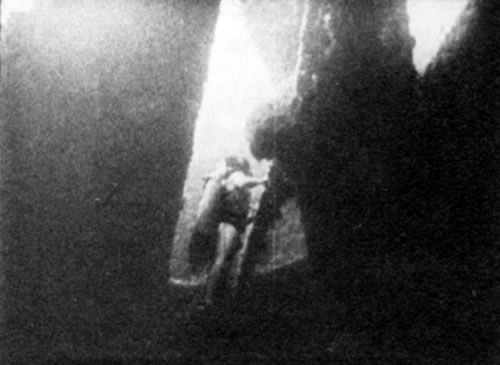
Figure 10.89: A Movie: the diver in the final scene.
A Movie has taken us through its disparate footage almost entirely by means of association. There is no argument about why we should find these images disturbing or why we should link volcanoes and earthquakes to sexual or military aggression. There are no categorical similarities between many of the things juxtaposed and no story told about them. Occasionally, Conner does use abstract qualities to compare objects, but this is only a small-scale strategy, not one that organizes the whole film.
In building its associations, A Movie uses the familiar formal principles of repetition and variation. Even though the images come from different films, certain elements are repeated, as with the series of horse shots in segment 1 or the different airplanes. These repetitions form motifs that help unify the whole film.
Moreover, these motifs return in a distinct pattern. We have seen how the titles and leader of the opening come back in some way in all the segments and how the “nudie” shot of segment 1 is similar to the one used with the submarine footage in segment 3. Interestingly, not a single motif that appears in segment 2 returns in segment 3, creating a strong contrast between the two. But then segment 4 picks up and varies many of the motifs of both 2 and 3. As in so many films, the ending thus seems to develop and return to earlier portions. The dead elephant, the tanks, and the race cars all hark back to the frantic race of segment 2, while the tribal people, the Hindenburg disaster, the planes, the ships, and the bridge collapse all continue motifs begun in 3. The juxtapositions that have obvious links play on repetition, while startling and obscure ones create contrast. Thus Conner has created a unified work from what would seem to be a disunified mass of footage.
The pattern of development is also strikingly unified. Segment 1 is primarily amusing, and a sense of hurtling exhilaration also carries through most of segment 2, up to the car crashes. But we have seen that the subjects of all the shots in segment 2 could also suggest aggression and violence, and they all relate in some way to the disasters to come. Segment 3 makes this more explicit but uses some humor and playfulness as well. By segment 4, the mixture of tones has largely disappeared, and an intensifying sense of doom replaces it. Now even odd or neutral events seem ominous.
Unlike the more clear-cut Koyaanisqatsi, A Movie withholds explicit meanings. Still, A Movie’s constantly shifting associations invite us to reflect on a range of implicit meanings. From one standpoint, the film can be interpreted as presenting the devastating consequences of unbridled aggressive energy. The horrors of the modern world—warfare and the hydrogen bomb—are linked with more trivial pastimes, such as sports and risky stunts. We are asked to reflect on whether both may spring from the same impulse, perhaps a kind of death wish. This impulse may, in turn, be tied to sexual drives (the pornographic motif) and political repression (the recurring images of people in developing countries).
Another interpretation might see the film as commenting on how cinema itself stirs our emotions through sex, violence, and exotic spectacle. In this sense, A Movie is “a movie” like any other, with the important difference that its thrills and disasters are actual parts of our world.
What of the ending? The scuba diver epilogue also offers a wide range of implicit meanings. It returns to the beginning in a formal sense: along with the Hopalong Cassidy segment, it is the longest continuous action we get. It might offer a kind of hope, perhaps an escape from the world’s horrors. Or the images may suggest humankind’s final death. After despoiling the planet, the human can only return to the primeval sea.
Like much of A Movie, the ending is ambiguous, saying little but suggesting much. Certainly, we can say that it serves to relax the tension aroused by the mounting disasters. In this respect, it demonstrates the power of an associational formal system: its ability to guide our emotions and to arouse our thinking simply by juxtaposing different images and sounds.
|



